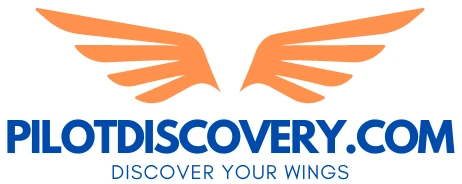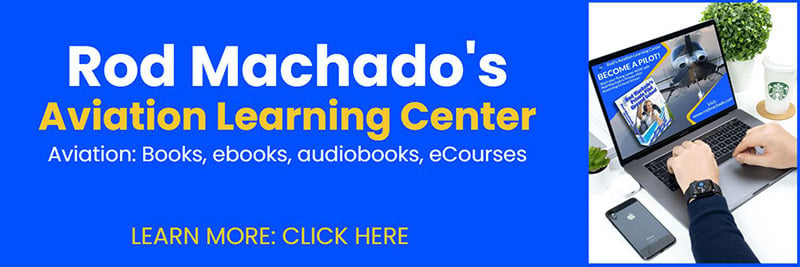Original publication date: December 4, 2021
Last Updated: 1 year ago
Author: Max Skyler
Topic: Flight Training
Number of Comments: 0
Training to become a pilot is a costly undertaking. Between aircraft operating costs, instructor-led training, exams, study materials, and supplies, the costs can add up. However, with careful budgeting, an assessment of your flight training goals, and some strategic planning, it is possible for all or part of your flight training to be free, and thus save substantial sums of money on your journey to becoming a pilot.
As a general rule, flight training requires a substantial outlay of money to pay for aircraft usage and to compensate an instructor. Having said that, there exist a myriad of strategies to offset, subsidize, or minimize costs, resulting in significant net savings over the course of your training.
Flight training itself cannot be inherently free due to the nature of the expenses involved. Airplanes cost money to maintain, flight instructors need to make a living, and pilots unavoidably will need supplies. Nevertheless, let’s examine 10 of the most common ways student pilots can save money and realize significant cost savings over the course of their training, in some cases resulting in net-zero expenditure.
1. Join the United States Air Force.
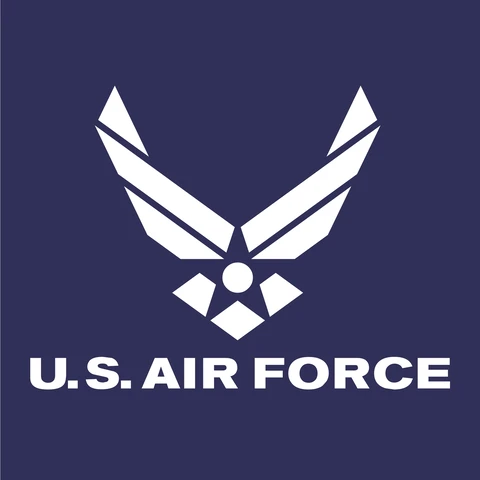
Joining the United States Air Force is one way to earn your pilot’s license absolutely, 100% for free. You will not only get your basic private pilot’s license and instrument rating, but you will have the opportunity to fly the fastest, most maneuverable, and among the most technologically sophisticated aircraft in the world… something which the average civilian pilot will never be able to do. As an additional perk, if you join the military, then you will only need 750 hours of cumulative lifetime flight experience in order to pursue an ATP (airline transport pilot) license and fly for commercial airlines later on.
Having said that, there is a catch: Enlisting in the military is a serious, life-changing commitment. You are committing to several years of service, in defense of our country. There is no such thing as a free lunch. So if you are willing to dedicate several years of your life to the military, then the payoff in terms of getting free flight training is just icing on the cake, as well as other benefits typically available to military veterans.
2. Get a Bachelor’s or Associate Degree in Aviation.

Enrolling in a bachelor’s or associate’s degree in aviation can help you save significant money in the long term, over the course of your flight school program, if your goal is to get a commercial pilot’s license. A typical aviation degree program will get you fully trained and licensed with your private, instrument, and commercial ratings, in addition to the general education requirements of a typical college degree program.
You can save money in three ways:
| 1. You can apply for college scholarships and grants that will help you reduce the overall cost of your tuition. |
| 2. By undergoing flight training through a degree program, you will be flying more frequently than you otherwise might if you were pursuing your pilot’s license on your own. This will help you to develop proficiency more quickly, as there will be less of a gap between lessons. |
| 3. If your goal is to eventually obtain your ATP (Airline Transport Pilot) license, which allows you to fly for commercial airliners, then getting a degree in aviation automatically reduces the minimum hours required in order to qualify for the ATP: a) In order to obtain your ATP rating, you must have amassed a total of 1500 cumulative lifetime flight hours. b) f you obtain a bachelor’s degree in aviation, then the required minimum number of hours is reduced to 1000. c) If you obtain an associate’s degree in aviation, then you only need 1200 hours. |
3. Opt for BasicMed rather than a 3rd Class Medical.

Fitness to fly is one of the prerequisites in order to obtain your pilot license. Pilots are required to undergo a medical exam every few years in order to maintain their flying privileges.
The FAA allows pilots of single-engine aircraft to obtain their medical certification in one of two ways:
| 3rd Class Medical Certificate | BasicMed |
|---|---|
| * Private pilots under the age of 40 must undergo a medical exam every 5 years, administered by an FAA-certified medical examiner. * Private pilots over the age of 40 must undergo this exam every 2 years. * Upon successful completion of the exam, you are issued a 3rd class medical certificate. * This certificate must be renewed after the specified number of years, respectively. * This certificate allows you to fly as any private pilot and also as an instrument-rated pilot. * Commercial operations are not allowed with a 3rd class medical certificate. * Commercial operations require a second-class medical certificate instead. | * Private pilots may alternatively undergo a medical certification process known as “BasicMed”. * BasicMed is less stringent than a 3rd class medical certificate. * Hence it is more restrictive in terms of what you can do with it. * The BasicMed exam can be administered by any general physician, and you must take an online medical awareness course. * The BasicMed physical exam is good for 4 years, and the online course is good for 2 years, after which both must be renewed, respectively. * Under BasicMed, as of this writing, pilots are only allowed to fly within the United States, Canada, and the Bahamas, with a private or instrument rating. * Commercial operations are not allowed under BasicMed. * Furthermore, the takeoff weight of the aircraft must be less than 6,000 pounds and must not be designed to carry more than 6 occupants (including the pilot.) |
You can save money on your flight training by opting for BasicMed. If your health insurance plan covers a free annual physical exam, then you can ask your doctor to fill out the BasicMed form for you, as part of the exam. A 3rd class medical, on the other hand, can cost a few hundred dollars out of pocket and is not typically covered by health insurance plans.
This will get you through your pilot and instrument ratings. You will have to obtain a 2nd class medical certificate if you wish to pursue a commercial license. But as it may take some time before you finish your private and instrument rating, before you are ready to apply for your commercial license, you can save money at the beginning of your flight training career by opting for BasicMed.
4. Enroll In An Online Ground School Course.

One of the requirements to obtain your pilot’s license is to pass a written test. In order to take the written test, you must first receive a written endorsement from an instructor. The endorsement basically asserts that your instructor has given you the necessary ground instruction in order to take and pass the exam.
One way to save money (and time) is to take an online self-paced ground school video course. This can prove to be far more cost-effective than paying your instructor to teach you the knowledge. There are many online ground schools available that you can sign up to, for a one-time flat fee, or for a monthly subscription fee. Rather than paying your instructor an hourly fee to teach you a class one-on-one, you can gain the knowledge and study for the exam at your own pace and repeatedly rewatch the videos as many times as needed. Once you complete the course and successfully pass a practice exam, the online ground school will issue you a certificate of endorsement, attesting that you are ready to take the written exam.
This can help you save hundreds of dollars in terms of ground instruction time. A typical online ground school might include 20 hours of video. At $25 per hour, that would be $500 for the course. Compare that to $250 for a typical online ground school video course, for example. Plus, you have the added benefit of being able to rewatch the videos an unlimited number of times, at no extra cost.
There are a number of online ground schools that have been approved by the FAA, which you can enroll in, to gain the ground school knowledge required in order to pass the FAA Private Pilot written exam.
The Pilot Institute is one such example of a popular online ground-school that we recommend. (Disclaimer: PilotDiscovery may earn an affiliate commission if you sign up for the ground school through this link.)
5. Get a Job At Your Flight School or Airport FBO.
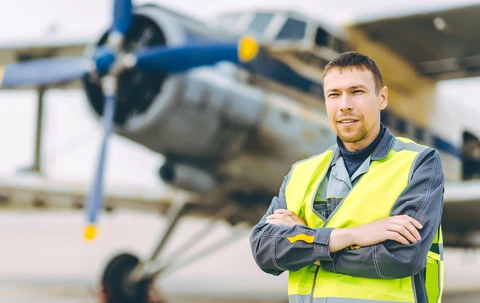
It’s not unheard of or uncommon for flight schools or airport FBOs to offer aircraft rental or flight instruction at a discount to their employees. Whether you are a lineman or a dispatch operator, or a receptionist, you should check with your local flight school or airport FBO to see if they offer discounts.
This has the added benefit of not only the monetary discount but also affords you the opportunity to immerse yourself in the world of aviation. You get a first-hand, front-row seat that grants you the visibility to learn about and to handle all of the different types of scenarios, issues, challenges, services, routine operations, requests, and problems that come through over the course of the day-to-day operations of an airport.
6. Consolidate Lesson Objectives Whenever Possible.
Consolidating lesson objectives is one way to save money on your flight training. For example, if you need to fly a certain number of cross country hours, and you also need to practice certain maneuvers, you can request your instructor to combine these in the same lesson.
Some examples where consolidation of lesson objectives may be possible, depending on the rating or certificate that you seek, include:
Since you are required to fly a certain number of cross-country hours during your flight training, it pays to combine your cross-country with other requirements, rather than covering these during separate flights.
This can help save some time and money, in terms of your flight training.
7. Leverage Simulators To The Maximum Limit Possible.
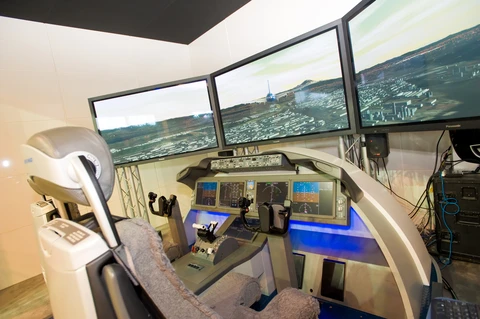
The rental of a simulator at a flight school is typically substantially cheaper than the cost of renting an airplane.
Using an FAA-approved flight simulator can also save you time since you don’t have to take off, land, or taxi in order to perform various flight maneuvers. You can pause in mid-flight. You can start your lesson in mid-flight as well.
| FAR Part 61 Simulator Allowances | FAR Part 141 Simulator Allowances |
|---|---|
| . |
8. Fly With A Safety Pilot To Build Your IFR Hours.
Pilots looking to pursue their instrument rating require a total of 40 hours of simulated or actual instrument time, of which only 15 hours need to be with an instructor. This means that the remaining 25 hours may be with any safety pilot, to practice what you have learned with your instructor.
A safety pilot can literally fly with you for free if they are another private pilot who is willing to accompany you, as you perform simulated flight using a view-limiting pilot under VFR conditions. This can save you as many as 15 hours of flight instructor time. (The caveat is that 15 hours is just the legal minimum. In practice, you may need more than 15 hours of instruction. So this money-saving strategy should only be employed as practical, based on how well you have covered the IFR skills you will have learned under an instructor.)
9. Fly As Often As You Can.
The more frequently you fly, the more quickly you will gain mastery over all of the maneuvers and skills you are required to develop in order to become a pilot or to obtain your next pilot rating. Long gaps in time between lessons can mean that you have to spend more time reviewing and repeating maneuvers in the cockpit, which can end up costing you more money in terms of flight training in the long run. It is important that you have a realistic idea of how long it takes to become a pilot.
As long as we are on the subject of mastery, you may want to gain some insight into how hard it is to become a pilot.
10. Consider Buying An Airplane Rather Than Renting.
There are pros and cons to buying vs renting an airplane, in terms of cost. A detailed cost-benefit analysis of renting versus buying is beyond the scope of this article, but as a general rule, the more frequently you fly, the more cost-effective owning an airplane becomes, in terms of a cost-per-flight-hour breakdown. How many hours a month would you have to fly in order to break even or save money on your aircraft ownership? There are a number of factors to consider, when deciding whether to buy or rent an airplane.
11. Pay As You Go. Do Not Take Out A Loan.
If you have the means to pay for each flight lesson as you go, do it!
If you have a source of income from a job while you take your flight lessons, then it may make more sense to pay as you go.
However, if you are a student or are unemployed, and you are looking to turn aviation into a career, then taking out a loan might be your only option. Taking out a loan may help you fast-track your flight training, but it will also fast-track your indebtedness.
You will end up paying a substantial amount of money in interest over the long term.
If you have the means to fund your flight lessons from savings or from a job, then avoid taking out a loan if you can, and pay for each flight lesson as you go.
12. Rent or Buy A Basic Airplane.
With today’s modern avionics, it may be tempting to train in a state-of-the-art complex airplane with a glass panel, autopilot, and other bells and whistles.
However, this will come at a cost. If you want to save money on your flight training, then you may want to consider training in an older, basic “six-pack”, steam-gauge airplane. These will be cheaper to buy or to rent. Yet they will get the job done and meet the minimum requirements in order for you to get your pilot’s license. You can always graduate to more modern, glass-panel aircraft later on.
In case you are wondering what kind of airplanes you can fly with a private pilot license, check out this resource.
13. Join A Flying Club.
If there is a flying club in your area, it may be more cost-effective, on an hourly basis, to rent the club’s fleet of airplanes than renting through your flight school or local airport on an hourly basis. Since each member of the club has to pay certain membership dues, this helps to defray the overall operating costs, resulting in potentially cheaper rental rates. If there is a flying club in your area, do some homework to see whether it would be cheaper or not.
14. Become The Co-Owner Of An Airplane.
Rather than buying an airplane outright by yourself, it is not uncommon for pilots to buy into an aircraft co-ownership agreement with one or more other pilots. This way, each owner will be jointly responsible for sharing the operating expenses of the aircraft, thus saving you substantial sums of money over the long term in terms of flight training. You will have to do the math to see how much and how frequently you would have to fly, in order for you to break even or save money as opposed to renting it.
The downside, of course, is that you are sharing the airplane with other people, and so any decisions that impact the airplane must be mutually agreed upon by all parties. And you may run into a situation where the airplane is unavailable for you to fly because your co-owner is using it.
15. Stick With One Flight Instructor Only.
In order to maximize your flight instruction, it is best to stick with one flight instructor throughout the entire duration of your training, from the first lesson until your checkride.
If you take lessons at a flying school that has several flight instructors, there may be times when your primary flight instructor is unavailable and you may be tempted to fly with a “substitute”.
However, this is not recommended, for the simple reason that the other instructor may not be familiar with your progress, and so you may end up having to repeat lessons.
When starting your flight training program, it would be a good idea to assess whether a particular flying instructor will be sticking around for a while. The last thing you want is for your instructor to quit your flight school in the middle of your training, forcing you to have to find another instructor. Many certified flight instructors (CFIs) will typically only stick around at flight schools for the sake of building time in order to gain the experience necessary to get a job with an airline.
Switching instructors midstream can result in costly setbacks, due to you having to repeat lessons, and demonstrate your proficiency again to a different instructor, who may have a different teaching style.
The only exception to this might be if you are flying at a FAR Part 141 flight school, which follows a more rigid curriculum, in which instructors can be more interchangeable.
16. Decide Whether To Fly Under FAR Part 61 or 141.
The FAA offers two different tracks for flight training, under Federal Aviation Regulations Part 61 or Federation Aviation Regulations Part 141.
Both are nearly identical in terms of their syllabus and objectives. At the end of the day, both will get you your pilot’s license. But both differ in their approaches. Both offer pros and cons.
| Part 61 | Part 141 |
|---|---|
| Instructors and student pilots have the freedom and flexibility to train and fly at their own pace, and create their own curriculum, so long as it prepares the student pilot to take and pass the checkride. | The curriculum is more structured and regimented, and thus requires the student pilot to follow a sequential syllabus and pass various checkpoints, and meet certain proficiency standards, before being allowed to proceed to the next steps. |
| A minimum of 40 hours of training is required. | A minimum of 35 hours of training is required. |
| Fewer hours using an FAA-approved flight simulator may count toward your minimum-hour requirement, compared to Part 141. | More hours using an FAA-approved flight simulator may count toward your minimum-hour requirement, compared to Part 61. |
| More stringent cross-country minimum requirements for instrument training, compared to Part 141. | Less stringent cross-country minimum requirements for instrument training, compared to Part 61. |
At first glance, it may seem that Part 141 would therefore be the cheaper route since it requires fewer minimum hours. However, the tradeoff is in the execution of the curriculum.
Part 141 is more suitable for pilots who wish to pursue commercial aviation from the get-go. The lower hourly requirements exist because it is assumed that the pilot will gain mastery and proficiency faster due to the regimented curriculum and the timeframe involved. However, this is not guaranteed. It is entirely possible that a pilot could take longer to qualify for the checkride under Part 141 than under Part 61, due to the lack of flexibility involved.
Part 61 is, therefore, more suitable for pilots who are not in a hurry to achieve commercial or ATP status, and prefer the flexibility to fly as often or as infrequently as needed, and to have greater flexibility in the execution of the curriculum.
Which one is right for you? Which one will save you more money? This is an area that may require you to do your homework. But this is a decision that can also have an impact on your financial bottom line, in terms of flight training costs.
17. Shop Around For The Least Expensive Flight School.
If there is more than one flight school within a reasonable commuting distance from your home, it may pay to shop around for which one is offering the better deal. Which flight school offers cheaper aircraft rental rates? Which flight school charges less for instructor time?
While cheaper is not always better, cost is definitely a factor that you will want to explore when making a decision to choose which flight school to sign up for (assuming that driving distance to each respective airport is not a factor).
You “get what you pay for”, as the old adage goes. But if all things are equal, in terms of the quality of the rental aircraft fleet, the airport amenities and services, and the availability of competent flight instructors who are there for the long haul (as opposed to CFIs who are strictly there to build the time and then leave), then it would definitely pay to shop around.
18. Borrow, Don’t Buy, Your Pilot Equipment.
Becoming a pilot requires you to invest not only in training and aircraft rental, but also in equipment and supplies:
If you are looking to save money on your flight training, you can look into borrowing or renting as many of the above items as possible. You can also look into buying them used, instead of new.
19. Use Free Flight Planning Tools.
If you need a tablet / iPad-based planning tool, you look into borrowing one, or buying a refurbished one, on websites such as Swappa.com.
Apps such as Foreflight and Garmin Pilot can be costly. But there are a plethora of free apps available as well, that you can download and evaluate on your own, to see if they meet your needs.
There are a number of free flight planning websites as well, such as skyvector.com.
You can always use paper maps, for free. (In fact, it is strongly recommended that you have paper maps and that you have a paper backup of your flight plan, in case you run into any problems with your tablet or iPad in flight.)
20. Have Your Employer Pay For Your Training.
If your employer requires you to travel for work, then perhaps you can convince them to pay for your flight training or reimburse you for it, so that you can fly yourself in your own airplane, rather than traveling with the airlines.
You cannot get paid for flying until you get a commercial pilot license. But you can use your private pilot license exclusively to commute to and from the workplace, as long as you aren’t paid for the act of flying, and you aren’t carrying passengers and cargo for hire.
This may seem like a stretch, but there are companies out there that may be willing to do it.
If your employer requires you to travel for work, then it might be worth checking with them to see if they can subsidize your flight training.
